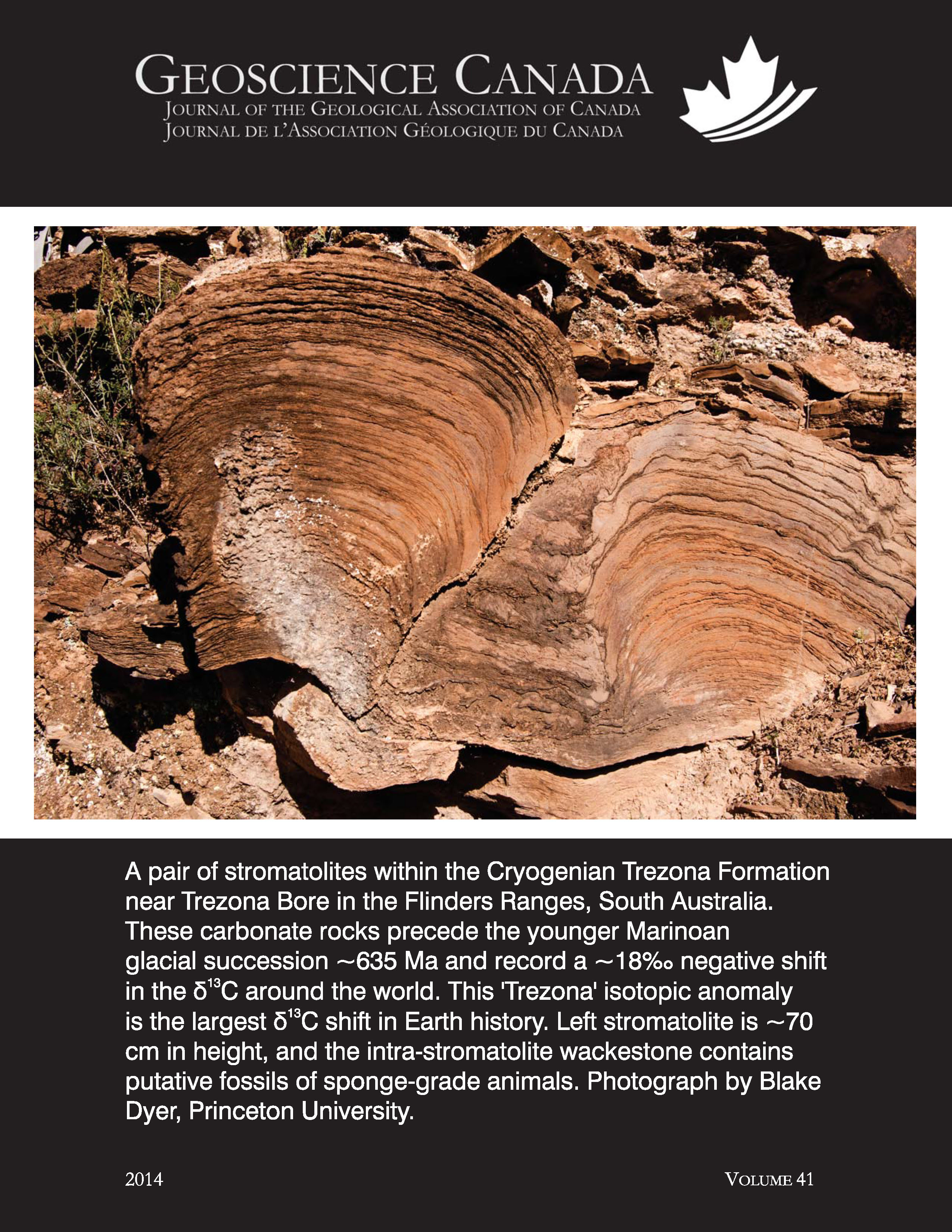Time-Transgressive Salinic and Acadian Orogenesis, Magmatism and Old Red Sandstone Sedimentation in Newfoundland
Published 2014-05-07
How to Cite
Abstract
We propose an intimate relationship between Silurian terrestrial red bed sedimentation (Old Red Sandstone), slab breakoff-related magmatism and deformation in the Newfoundland Appalachians. Red bed sedimentation started during the Early Silurian, and records the progressive rise of the Salinic mountains in the tectonic hinterland of the orogen. The red beds were mainly deposited in molasse-style foreland basins in front of an east-propagating terminal Salinic deformation front. New U–Pb zircon dating of volcanic rocks interlayered with the Silurian red beds in key structural locations yielded ages ranging between 425 and 418 Ma, which, combined with the existing geochronological database, suggests that the sedimentary rocks are progressively younger from west to east and overstep the accreted Gondwana-derived terranes. We propose that deposition of the red beds is a good proxy for the time of cratonization of the accreted terranes. Eastward migration of the Salinic deformation front was accompanied by eastward-widening of a slab-breakoff-related asthenospheric window. The latter is interpreted to have formed due to a combination of progressive steepening of the down-going plate following entrance of the leading edge of the Gander margin and its eduction. Gander margin eduction (reversed subduction) is proposed to have been instigated by the trench migration of the Acadian coastal arc built upon the trailing edge of the Gander margin, which developed contemporaneously with the Salinic collision. The resultant thinning of the lithosphere beneath the Salinic orogen, built upon the leading edge of the Gander margin immediately prior to the onset of the Early Devonian Acadian orogeny, set the stage for generation of the widespread bloom of Acadian magmatism.
SOMMAIRE
Nous proposons qu’il y a eu une relation intime entre la sédimentation des couches rouges continentales au Silurien (vieux-grès-rouges), un magmatisme lié à une rupture de segments de croûte, et la déformation appalachienne à Terre-Neuve. La sédimentation des couches rouges qui a débuté au début du Silurien témoigne du soulèvement progressif des monts saliniques de l’arrière-pays tectonique de l’orogène. Les couches rouges se sont déposées sous forme de molasses dans des bassins d’avant-pays, à l’avant du front de déformation salinique terminale qui se déployait vers l’est. De nouvelles datations U-Pb sur zircon de roches volcaniques interstratifiées avec des couches rouges siluriennes en des lieux structurels stratégiques montrent des âges qui varient entre 425 Ma et 418 Ma, ce qui, combiné aux bases de données géochronologiques existantes permet de penser que les roches sédimentaires sont progressivement plus jeunes d’ouest en est, et qu’elles surplombent les terranes accrétés du Gondwana. Nous suggérons que les couches rouges sont de bons indicateurs temporels de la cratonisation des terranes accrétés. La migration vers l’est du front de la déformation salinique a été accompagnée par un élargissement vers l’est d’une fenêtre asthénosphérique liée à une rupture de la croûte. Cette dernière aurait été provoquée par la combinaison de l’enfoncement progressif de la plaque qui a suivi l’entrée du bord d’attaque de la marge de Gander, et son éduction. Nous proposons que l’éduction (l’inverse de la subduction) de la marge de Gander a été provoquée par la migration de la fosse tectonique côtière acadienne, induite par la migration du bord d’attaque de la marge de Gander, contemporaine de la collision salinique. L’amincissement de la lithosphère sous l’orogène salinique qui en a résulté, et qui s’est déployé au bord d’attaque de la marge de Gander juste avant l’enclenchement de l’orogénie acadienne au début du Dévonien, a préparé le terrain du déploiement à grande échelle du magmatisme acadien.
